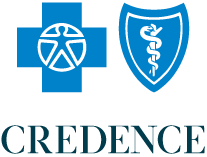7 MIN READ
There are many ways to stay physically healthy. Functional fitness is one way to improve day-to-day physical wellness. It helps you train your muscles for everyday activities, more so than traditional exercise. According to the Mayo Clinic, “functional fitness exercises train your muscles to work together and prepare them for daily tasks by simulating common movements you might do at home, at work or in sports,” often with an emphasis on core stability and strength.
Training with functional fitness in mind is important since it prepares your body to move efficiently and can help protect your spine, knees, hips and shoulders—all of which become more fragile as you age. This type of fitness training can help make everyday activities easier, reduce injury risk and improve quality of life. It helps you continue to say ‘yes’ to the things you love doing like playing with the kids, hiking, participating in sports or even doing the housework on your own.
Exercises that involve core stability and work multiple muscles at once are all functional exercises. Great exercises include deadlifts with dumbbells, squats, push ups, pull ups, lunges and overhead dumbbell presses. Always end your training by massaging, stretching and foam rolling your muscles. Don’t forget that rest and recovery are just as important as fitness itself. Light yoga or stretching regularly will help you replenish, rest and recover between workouts.
Practicing functional fitness—even if it’s only 10 minutes a day—can help eliminate soreness, prevent injury and help your muscles recover faster. You can follow training guides online or find a gym that offers functional training. It’s important that your body stays strong and flexible in order to keep doing the activities you love pain-free.
Talk to your doctor before starting a new exercise program. Depending on your individual medical conditions, medications and overall conditioning, a doctor may advise different levels of activity.
This information is provided for general informational purposes. Information contained in this communication is not intended to replace professional medical advice, diagnosis or treatment. Always seek the advice of your physician or other qualified healthcare mayprovider regarding your healthcare needs.
